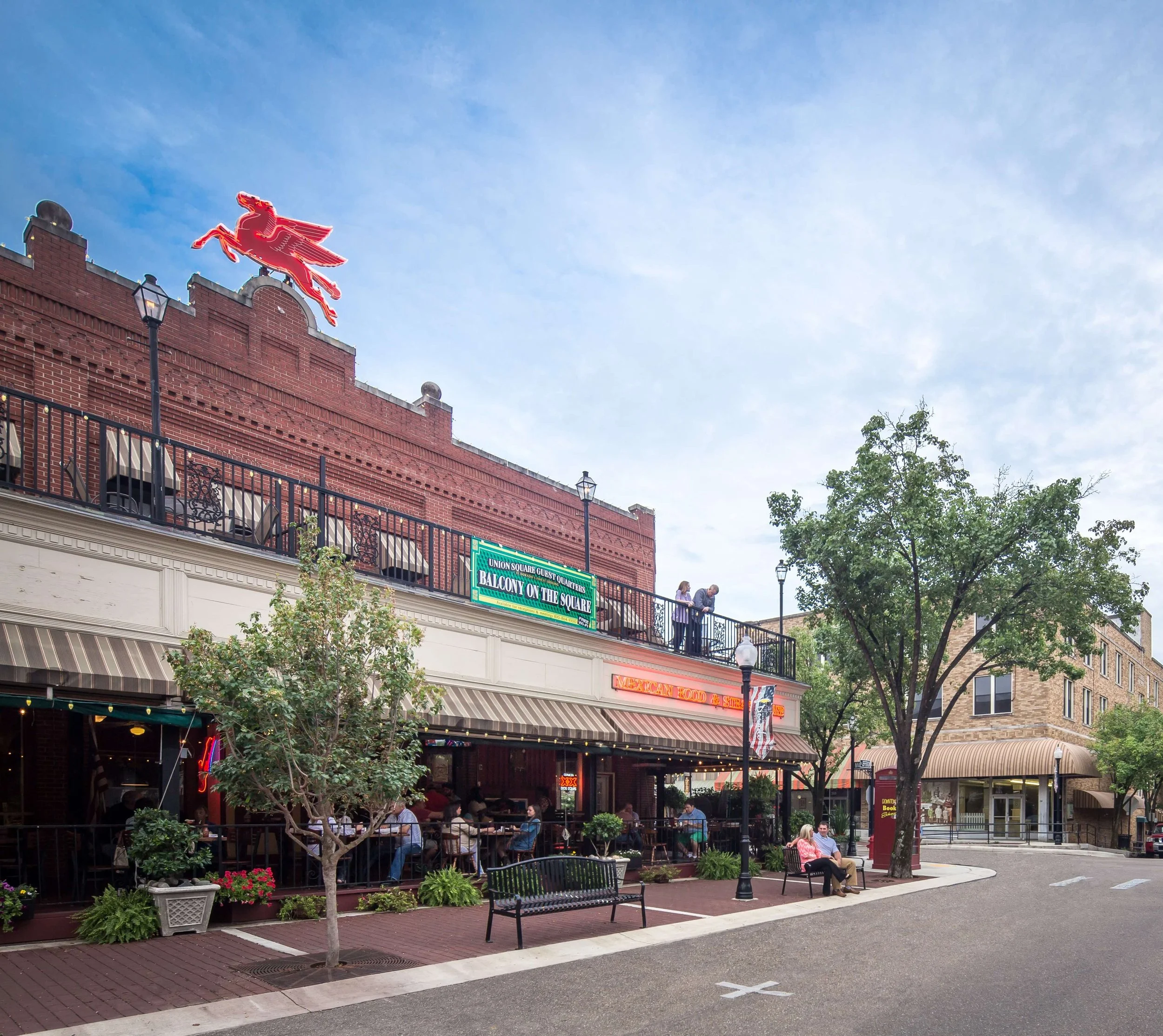Downtown El Dorado’s renewal set the stage for MAD
By Richard Mason
In the early 1980s, El Dorado’s downtown occupancy was less than 15%. It was a near slum. My office building, which I bought and renovated at the time, was the only new construction since the ill-conceived Union Square Mall was removed in the mid-1970s.
The renewal of downtown started with the dismantling of the structures that enclosed El Dorado’s central business district. After Main Street was once again a thoroughfare, I purchased three vacant buildings and renovated them. They have been under lease continuously since that time. These buildings were the start of several decades of the Mason family’s real estate purchasing and renovating downtown property. Along the way, as we were coming up with a more or less Downtown Master Plan, we added 54 park benches, planted more than 1,000 trees along the sidewalks, added 65 small box planters and four large courthouse corner planters, and installed two old British red telephone booths and an 1878 Central of Georgia Railway coach and caboose. We also worked with the Chamber of Commerce and Prestolite Electric to add 20 replica turn-of-the-century street lights.
Downtown El Dorado.
www.ThinkDero.com / El Dorado
Of course, not everything worked out according to plan, but a lot did, and with our hands-on approach to this urban renewal of downtown El Dorado, we came up with several concepts that I believe are critical in a downtown’s recovery.
The must-dos
Renovate downtown property: Make it equal or better than competitive mall or strip center property. When we purchased old rundown buildings, the first thing we did was to renovate them, and then we recruited businesses, but not just any business. We practice retail clustering, and that means our retail must have the same customer, and only retail is allowed on the ground floor.
Landscape the downtown: Plant trees and increase greenspace. I know that sounds simple, but sometimes solutions are simple, and the benefits that trees provide are easily overlooked. A recent study estimates that each downtown tree is worth $25,000 in benefits to the city. We have just planted 25 Autumn Blaze red maples, continuing a tree planting effort that is several decades old. These trees add to the ambiance, and reduce utility cooling needs by as much as 25%.
The dining scene includes a courtyard and other settings.
www.ThinkDero.com / El Dorado
Make street and sidewalk improvements: These are basic infrastructure items that we take for granted, but good sidewalks and quality streets are critical if your downtown is to have a quality look. These include making sidewalks inviting and accessible, along with upgrading the existing sidewalks and repaving a number of multiple interconnecting streets where needed. El Dorado’s new wide pedestrian-friendly brick sidewalks are a great infrastructure addition.
Remove red lights and one-way streets: Red lights on virtually every corner need to go. Of course, roundabouts would be the perfect replacement, but since space and public attitude make roundabouts hard to insert in the center of an older city, four-way stop signs should take the place of all those red lights. One-way streets just confuse drivers, and most progressive downtowns did away with them years ago.
“Today El Dorado’s downtown is truly the heart of the city, and development of any significance is always planned around the Courthouse Square.”
Promote living downtown: Focus on bringing more residents to downtown. Downtowns need people more than anything else, and a thriving downtown is always known as the place where people live and congregate.
An El Dorado renewal
When Roger Brooks, a downtown development expert, came up with a plan to make El Dorado an entertainment destination, he said that if the downtown hadn’t been restored his plan wouldn’t have worked.
With funding from city sales taxes and private dollars, El Dorado Festivals and Events LLC created the Murphy Arts District (MAD) near downtown beginning in 2017. The first phase saw the creation of the Haywood, a 70-room hotel; the Griffin Restaurant; the First Financial Music Hall; the MAD Playscape for children; and an 8,000-seat amphitheater.
Plans for the second phase are to convert a four-story downtown building into a new art museum, and, as icing on the cake, renovate Arkansas’s last grand theater, the Rialto, as a Broadway venue playhouse.
When El Dorado became a Main Street town in 1986, one of its goals was to make downtown El Dorado the center of the city again, and in 2009 downtown El Dorado was awarded the Nation’s Best Main Street Downtown. Today El Dorado’s downtown is truly the heart of the city, and development of any significance is always planned around the Courthouse Square.
Richard Mason is a downtown developer, published author and speaker. He can be reached at richard@gibraltarenergy.com.



